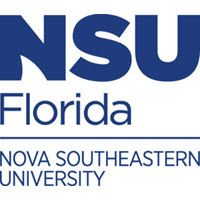Below is a summary of the abstract you submitted. Presenting author(s) is shown in bold.
If any changes need to be made, you can modify the abstract or change the authors.
You can also download a .docx version of this abstract.
If there are any problems, please email Dan at dar78@pitt.edu and he'll take care of them!
This abstract was last modified on March 16, 2023 at 11:02 a.m..

Bacteriophages (phage) are viruses that infect bacteria and are considered the most abundant biological entity in the world. Recently, phage has been utilized in biotechnological applications including their use as biocontrol agents in food preservation, sanitizers, wastewater treatment, bioremediation of oil spills, and combating antibiotic resistance. Therefore, decoding and analyzing the genetic composition of novel bacteriophages is critical to their potential use in these emerging applications. Through the SEA-PHAGES (Science Education Alliance-Phage Hunters Advancing Genomics and Evolutionary Science) program at NSU, our goal was to analyze the genomes of two recently discovered bacteriophages, Alyssamiracle and Fribs8. These phages infect Gordonia rubripertincta NRRL B-16540, a gram positive soil bacteria that can breakdown hydrocarbons and is an opportunistic pathogen in catheter infections. The genomes were sequenced using Illumina Next-Generation Sequencing, auto-annotated using DNA Master, and manually refined with GeneMark, Glimmer, Phamerator, NCBI BLAST, and HHPred. Sequencing data revealed that Alyssamiracle has circularly permuted genome ends with a total genome length of 65,525 bp and belongs to cluster DV. Alyssamiracle contains ~97 predicted genes and all were transcribed rightward. In contrast, Fribs8 has 3’ sticky overhang genome ends with a total genome length of 45,985 bp and belongs to cluster CT. Fribs8 contains ~68 predicted genes and a third of the genome is transcribed leftward. Collectively, our results provide bioinformatic evidence that Alyssamiracle and Fribs8 are two novel phages that infect G. rubripertincta. These phages will be included in the SEA-PHAGES database and could possibly be prioritized for a specific use.
